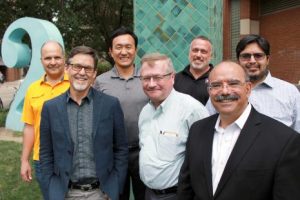Last week, IRG-2 member Jeanie Lau’s paper “Correlated insulating and superconducting states in twisted bilayer graphene below the magic angle” was published in Science Advances.
Lau, professor of physics at Ohio State and lead author on the paper, and her team studied the “magic angle” that makes graphene layers become a superconductor, meaning they are able to conduct electricity without resistance, suffering no loss of energy. The team found that graphene layers remained supconductive over a smaller angle than previously thought possible, opening up more possibilities for their use in real world applications.
The NanoSystems Laboratory, a CEM-supported research facility at Ohio State, was utilized for device fabrication necessary to perform experiments for this study.
Lau and other Ohio State researchers collaborated with scientists at the University of Texas- Dallas and the National Institute for Materials Science in Japan. More information about this research and the team can be found on Ohio State’s news website. You can read the paper on the Science Advances website.

